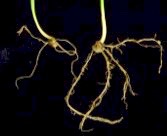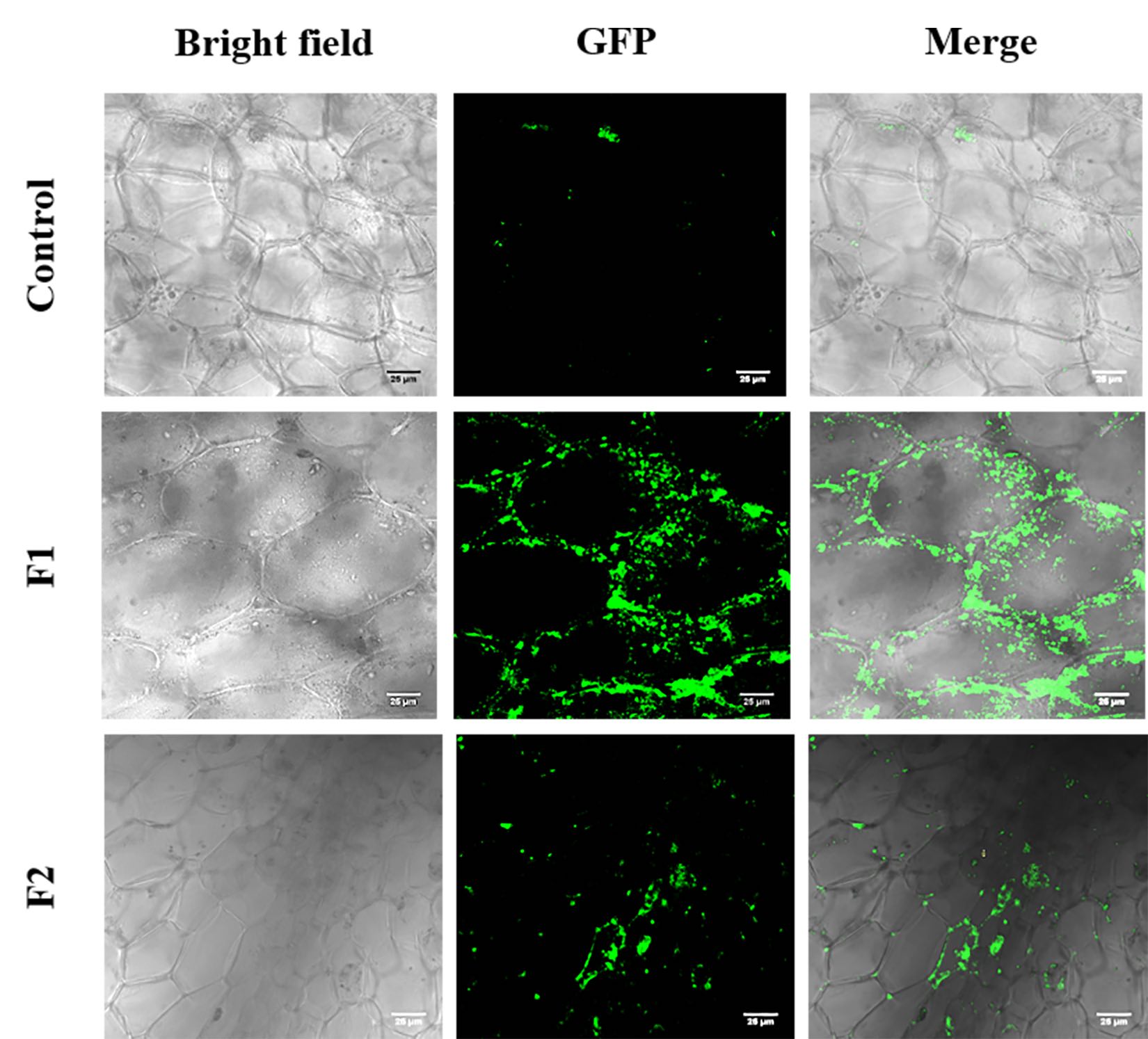Microbial Enhancement of Crop Yields
In addition to rhizobial species, members of the Azospirillum/Rhodospirillum clade constitute a second well-known class of free living plant-associated nitrogen fixing bacteria. Azospirillum sp. are very interesting as they form beneficial interactions with a much wider group of crop plants then do rhizobial species that primarily interact with beans and clover. Specifically, Azospirillum sp. are known to productively interact with >64 plant species including all major crop plants such as corn, rice, wheat, oats, barley, and many vegetables. Furthermore, Azospirillum sp. not only provides plants with fixed nitrogen, but in addition, this genera also synthesizes numerous plant hormones such as auxin and gibberellins that stimulate increased root growth (Figure 1). This latter feature allows inoculated plants to form larger root biomass that can pull more moisture and minerals from the soil with a notable increase in plant resistance to drought, an important feature in this period of global warming where agricultural areas are becoming arid. There are numerous reports of Azospirillum inoculated seeds providing 20 to 70% enhancement of crop yields with much lower (or even no) requirement for the addition of chemically synthesized nitrogen fertilizer.

Figure 1. Examples of stimulated root growth and root branching by Azospirillum brasilense. Shown are representatives of barley seedlings at three weeks of age, greenhouse grown, which were either not inoculated (left) with A. brasilense or inoculated (right) with A. brasilense.
Currently, there are over a million hectors of corn, wheat, and rice that are annually grown with seeds that are preinoculated with Azospirillum sp with the most common use of Azospirillum occurring in undeveloped and in developing countries that cannot afford the cost of chemically derived fertilizers. Azospirillum is also used as a bio-fertilizer in small �natural/organic� farms in developed countries (predominantly US, France and Israel), however, despite its tremendous economic and environmental potential, there is no large-scale commercial use of Azospirillum in any country. One reason why large seed distributors are not utilizing Azospirillum inoculated seeds is that enhanced crop yields are not highly reproducible so there is a high failure rate. This impediment is thought to be caused by a short shelf life of the vegetative replicative form of Azospirillum that is used as an inoculum. This necessitates that seeds must quickly (within a few days) go from inoculation with freshly cultivated Azospirillum into the ground before the bacterium becomes unviable-a major hurdle for large scale agricultural farming.
Stable metabolically dormant Azospirillum cysts have a very long shelf life (viable for decades) and thus have the potential to overcome viability problems. Unfortunately, the use of cyst as an inoculum has been hampered by very low yields of cyst production (typically <1% yields). Our research efforts in understanding cyst development is for the first time allowing us to develop strains of commercially used Azospirillum species that have reproducible high yields of cyst production. Indeed by regulating the expression of a key transcription factor, we are now capable of increasing cyst production to >90% of the total viable cell count. We are initiating research into the best way to effectively coat seeds with cysts to yield a productive plant inoculation. We are also investigating the mechanism of vegetative Azospirillum interaction with plant roots and have recently established that Azospirillum actively migrates to plant reproductive tissues (flowers) which opens up a number of interesting questions regarding the transmission of Azospirillum to subsequent plant generations.

Figure 2. Confocal microscopic analysis of Azospirillum present in plant ovary tissue. Bright field, fluorescent (488nm excitation), and merged image analysis of sectioned bean seed pods from plants grown without inoculation (top panel) and plants grown from seeds inoculated with GFP-expressing A. brasilense (middle panel). The bottom panel is a representative section from a bean pod in of F2 generation of A. brasilense GFP inoculated plants. For the F2 generations, pods were taken from the F1 plants and planted directly in sterile soil without further A. brasilense GFP inoculation.
Relevant References:
Malinich, E. & C. E. Bauer (2017) The Rhizosphere Nitrogen Fixing Bacterium Azospirillum brasilense Is Vertically Transmitted by Plant Seeds. Submitted for review
